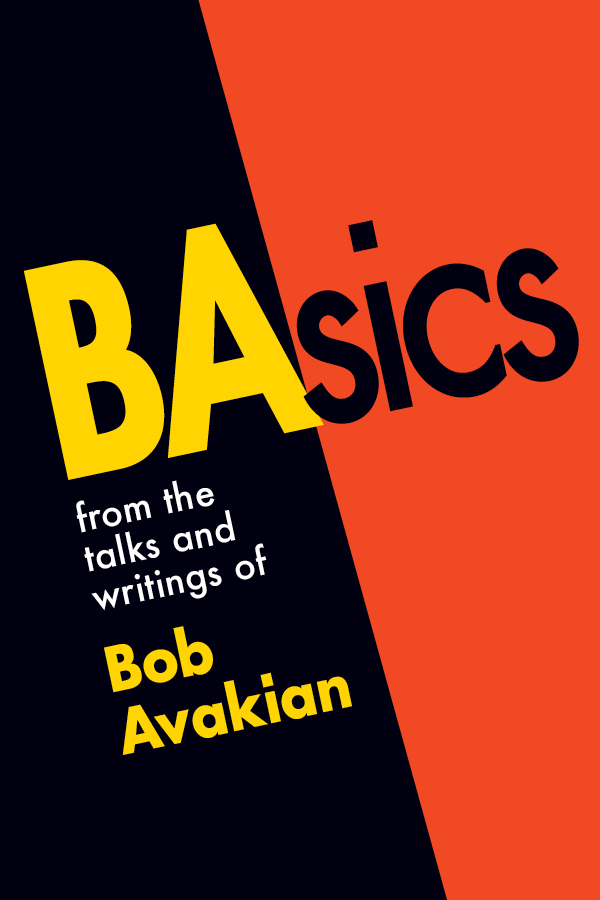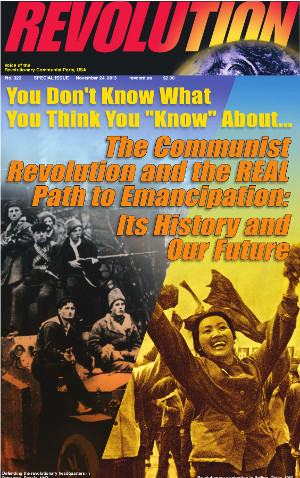“Reform” Rikers Island Jail? No! Shut This Torture Hellhole Down!
by Li Onesto | June 29, 2015 | Revolution Newspaper | revcom.us
In 2011, the U.S. Attorney for the Southern District of New York filed a class-action lawsuit against New York City on behalf of prisoners at the city’s Rikers Island jail, alleging, “unnecessary and excessive force inflicted upon inmates.” The suit cited multiple incidents of officers brutally beating people and especially abusive treatment of the mentally ill at Rikers, which is the second-largest jail system in this country.
On Tuesday, June 23, it was announced that the city had come to an agreement with the U.S. Department of Justice (DOJ) in this suit. The settlement includes the appointment of a federal monitor to oversee the jail complex, an “expansive policy” on the use of force by guards against inmates, and the installation of thousands of surveillance cameras.
First off, we have to ask, why should anyone think that such “reforms” are going to do anything to stop the horrific crimes being carried out against prisoners in Rikers?
This will be the sixth settlement with the Department of Correction (DOC) over these kinds of problems at Rikers since 1990. The previous five class-action lawsuits also came with promises of revised “use-of-force policies,” the installation of video cameras in certain areas and strengthening internal investigations. But the rampant abuse at Rikers has only continued, if not gotten worse.
And, looking at similar “reforms” to police departments around the country, we should point out that “federal oversight” hasn’t done anything to put a stop to the epidemic of police murder of Black and Latino people. There have been body cameras and videos of murder by police, like in the Eric Garner case, but cops still aren’t indicted and sent to prison. And “use of force guidelines” have not prevented cops from killing unarmed Black youth like Freddie Gray and 12-year-old Tamir Rice.
But more fundamentally, the systematic brutality and abuse going on at Rikers is what’s going on in prisons all over this country. It is part and parcel of mass incarceration in the USA, serving an essential function for this system of repression and control.
Crimes Exposed
Rikers sits on an island in the East River, right next to Manhattan. It is a 10-jail facility that has an average of 14,000 inmates a night. Most people have not known about the horrors happening only miles from New York City’s skyscrapers. But in recent years, there have been searing exposures of the crimes being committed against prisoners by guards at Rikers. Articles in major media such as The New York Times, the Associated Press and The New Yorker have documented the systematic and widespread brutality, lack of medical care, deaths due to neglect, and torturous use of solitary confinement at Rikers. And the news has covered terrible deaths of prisoners due to beatings, medical neglect, and conditions that lead people to commit suicide.
In 2014, The New York Times reported that use of force by guards at Rikers had gone up nearly 90 percent over the previous five years, even as the jail’s population had declined. In the first six months of 2014, guards at Rikers used force on inmates 1,927 times—an increase of more than one-third compared with the same period last year (according to the Correction Department’s own data).
Rikers is supposed to be a place for people who are waiting for a trial (and still presumed innocent) and those who have been given less than a year’s sentence. But in reality, Rikers is a hellhole where thousands of people have ended up “waiting for their day in court” while being subjected to brutality and torture, and denied medical and mental health care.
There are 14,000 people imprisoned on Rikers Island. 85% of them have not had a trial or been convicted of a crime. 40% suffer from diagnosed mental illness. Hundreds of them are teenagers.
As of last March, it was reported that 400 people had been at Riker’s for at least two years without being convicted; half a dozen had been there for 6 years without being convicted of any crime. Some 1,400 people had been waiting at least a year to have their cases settled, some of them arrested for crimes that wouldn’t even have sentences for that long if they were found guilty. [The city now says it resolved 42% of these cases in the last two months.]
Brutal Treatment of Mentally Ill
At Rikers, the standard “treatment” for prisoners with mental illness is brutal beatings, pepper spray, and solitary confinement.
Inmates with mental disorders make up nearly 40 percent of the 11,000 prisoners at Rikers and suffered more than three-quarters of the injuries. In 2014, The New York Times reported that its four month investigation of Rikers found that brutal attacks by Rikers guards—particularly on those with mental health issues—were common occurrences. Over one 11-month period in 2013, 129 prisoners suffered “serious injuries,” including fractures, wounds requiring stitches and head injuries, in altercations with the jail’s staff members. And 77 percent of those seriously injured had been diagnosed with a mental illness.
Health department staff members interviewed 80 of 129 prisoners after they were injured, and in 80 percent of the cases, the inmates reported being beaten after they were handcuffed. In five of the 129 cases, the beatings followed suicide attempts.
The crisis of the mentally ill on Rikers was highlighted in 2013 when a Black prisoner, Jerome Murdough, a former Marine, died of hyperthermia while on psychotropic drugs, locked inside a cell where the temperature was 101 degrees. Murdough had been homeless when he was arrested for trespassing.
In August of 2014, the U.S. attorney for Manhattan released a 79-page report on the “deep-seated culture of violence” at Rikers, resulting in a “staggering” number of injuries, where “adolescents are at a constant risk of physical harm.” The report also documented “excessive” use of solitary confinement of youth, especially youth with mental illness. The report said that on a single day (October 30, 2012) over 43 percent of the 705 adolescent males at Rikers had been subjected to violence by staff on at least one occasion during their time there.
And now we have the heartbreaking and infuriating story of Kalief Browder, who took his own life on June 6—-driven to do this by the years of torture and brutality he was subjected to during his three years at Rikers. He was only 16-years-old when he ended up at Rikers, accused of stealing a backpack ! He was held in solitary confinement for two years and repeatedly beaten by prison guards and other inmates. He refused to plead guilty, insisting on his innocence. Finally, the charges were dropped and Kalief was released, but he was unable to escape the damage of the years of years of torture and abuse.
At Rikers, almost half of all teenage inmates have been diagnosed with mental illnesses and nearly three-quarters of the youth in solitary confinement are mentally ill.
Rikers inmates in solitary confinement are seven times more likely to hurt or mutilate themselves than those in the general population, according to the city’s Department of Health and Mental Hygiene. The U.S. Department of Justice found in 2009 that half of juvenile suicides behind bars happened while young people were in solitary confinement.
Solitary confinement at Rikers is officially called “punitive segregation,” and officials say this is only for the most dangerous prisoners. But in fact, 16- and 17-year-olds can be sent to “the bing” for horseplay and “noisy behavior” or if they “annoy” staff members. Youth with “unauthorized amounts” of clothing or art supplies can go to solitary, too.
Only the U.S., Somalia and South Sudan have declined to ratify the United Nations’ Convention on the Rights of the Child, which prohibits juvenile solitary confinement as a matter of international law.
Rikers is now supposed to end solitary confinement for 18 to 21-year-old inmates by 2016, “provided that sufficient resources are made available to the Department for necessary staffing and implementation of necessary alternative programming.” And guards are not supposed to put 16 and 17-year-olds suffering from “serious mental illness,” in isolation. But as it now stands, the brutality of solitary confinement at Rikers, including for adolescents, continues. And prison guards can get around rules by using different names for what is in fact, solitary confinement—calling it instead, “punitive segregation,” “disciplinary segregation, “protective segregation”, or even “reflection time.” It’s like when the U.S. carries out torture and calls it “enhanced interrogation.”
The settlement includes new “reforms” that supposedly address the safety and supervision of teenage prisoners. But what’s really needed is a new rule saying that NO minors will be imprisoned at Rikers, period—let alone subjecting them to the torture of solitary confinement.
Denying People Medical Care
Prisoners at Rikers also die because they are denied medical care.
The Associated Press reported last year that over the last five years, poor medical care at Rikers had helped precipitate the death of at least 15 prisoners.
In 2014, Bradley Ballard, 39, a schizophrenic prisoner died after being left alone in his cell for seven days. He was denied some of his medications for diabetes and mental health issues and his toilet was clogged and overflowing. He was found naked, covered in feces, with his genitals swollen and badly infected. He was taken to the hospital, but died hours later.
Andy Henriquez was brought to Rikers when he was only 16. After three years, he was still waiting for trial and was put in solitary confinement. He had been complaining of chest pains for months, but none of the guards took him seriously. On April 7, 2013, he called out for help, but the guards did nothing. Other prisoners who shouted out in alarm were also ignored. Andy Henriquez died from a tear in his aorta.
*****
The so-called “reforms” are in response to widespread exposure of the horrendous murder and torture of prisoners that is going on in Rikers. But whatever changes the City of New York now agrees to, and whatever “federal oversight” goes on, is NOT going to really address what fundamentally gives rise to all these crimes against prisoners that have been taking place at Rikers. This is not about expanding guidelines for use of force, “video cameras,” “accountability,” and “better training.” This is about a system that needs mass incarceration because there is a whole section in society, of millions and millions of Black and Latino people for whom it has no use and no future. This system needs to control and contain this volatile force in society and uses its police, its IN-justice court system, and its prisons to do this. And the crimes being carried out at Rikers are part of this.
Volunteers Needed... for revcom.us and Revolution
If you like this article, subscribe, donate to and sustain Revolution newspaper.






